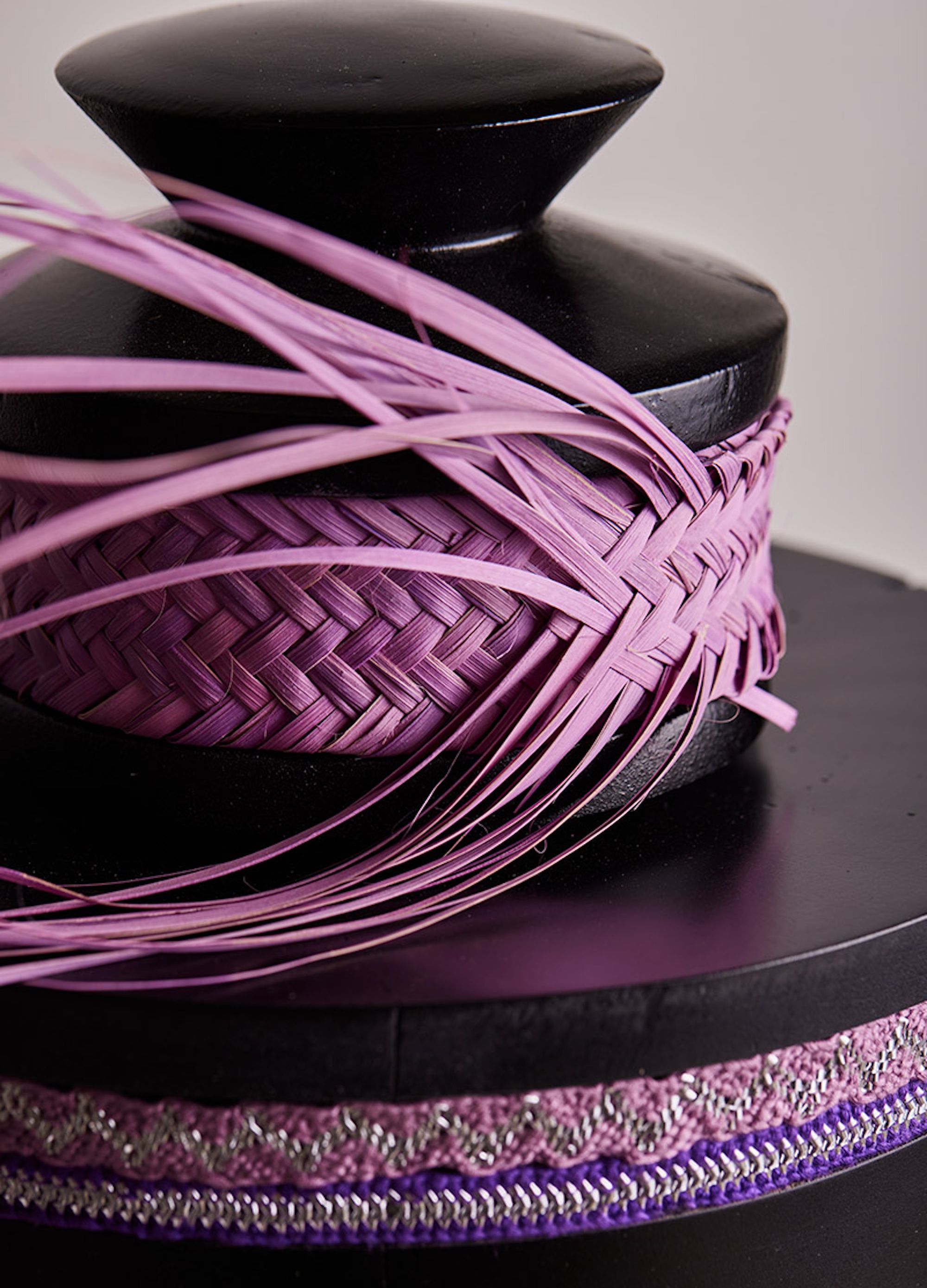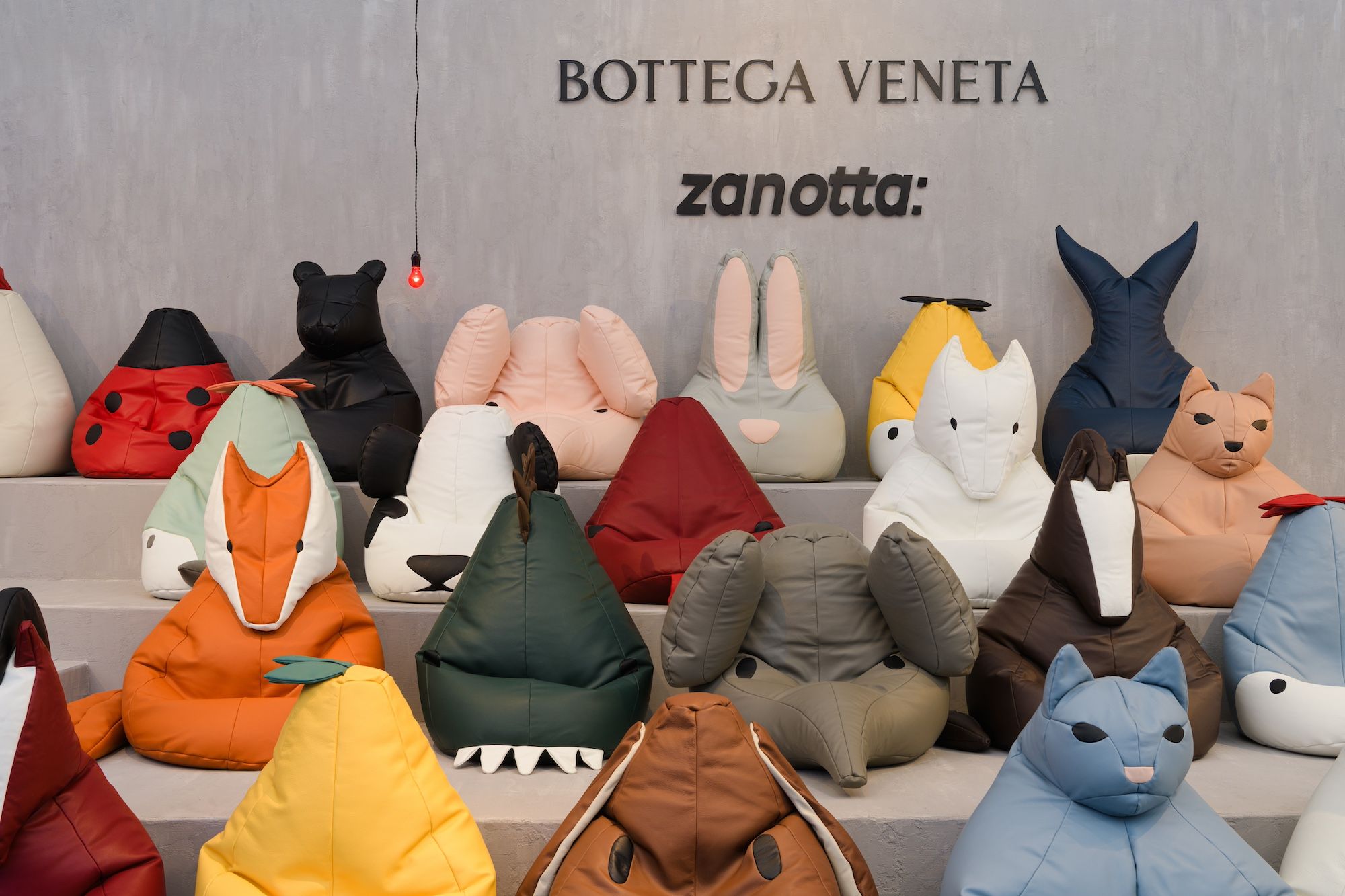IN COLLABORATION OCTOBER 14 2023
by Anna Carnick
Fernando Laposse on cultivating change through design
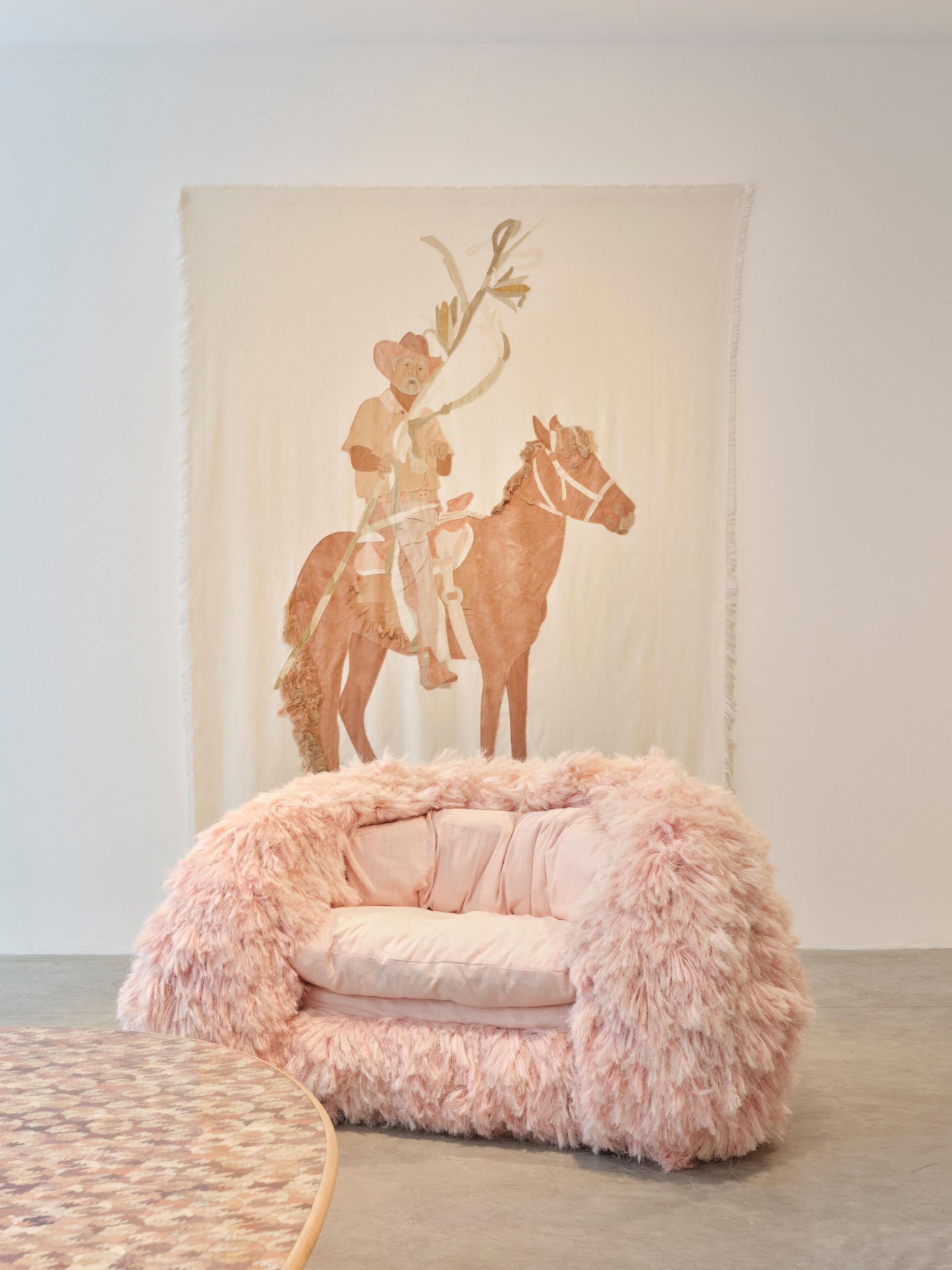
INSTALLATION VIEW OF FERNANDO LAPOSSE: GHOSTS OF OUR TOWN
Photography by Timothy Doyon; Courtesy of Friedman Benda and Fernando Laposse
For Mexican designer Fernando Laposse, design and advocacy go hand in hand. Since 2015, Laposse has collaborated with residents of Tonahuixtla, a small farming village in the Mixtec region of Puebla, on a community-centered project and workshop that harnesses design as a tool for social and environmental healing. Witnessing the depletion of local land in the wake of industrial agriculture—the implications of which range from loss of biodiversity and jobs to large-scale migration—native seeds and traditional farming methods were reintroduced. The natural byproducts of the harvest—humble materials like sisal and heirloom corn husks—are transformed into museum-quality design pieces that spark reflection on materials and their cultural significance.
The fruits of that labor have become the subject of Ghosts of Our Towns, Laposse’s first solo show with New York’s Friedman Benda. Laposse’s works—composed of corn, agave, and avocado (the last resulting from a more recent cooperation with the community of Cherán)—draw an arc between disruption and restoration, dissolution and hope, with the aim of long term healing and sustainability. As he says, “Efforts to regenerate the land go hand in hand with efforts to regenerate community.”
Read on for more in his own words.

MEXICAN DESIGNER FERNANDO LAPOSSE
Photo courtesy of the designer
“If you want to do things right, there are no shortcuts.”
Fernando Laposse
Anna Carnick / What has been the greatest source of inspiration or pride in your ongoing work in Mexico? And the biggest challenge?
Fernando Laposse/I think the greatest inspiration is the people of course and the biggest pride is that we were able to find common ground to collaborate. I am proud to see how design has been bringing creative solutions to reintroduce heritage seeds, to regenerate eroded soils, and to generate income for so many people.
The biggest challenges were to keep momentum and enthusiasm in the first stages, as we had to wait for plants to grow and this took several years. But I realized that the one person that was at risk of losing patience was myself, as I was caught up in the pressure of the revolving-door cycles of the design fairs calendar. It was a whole process of unlearning the bad habits of design and learning how to be a traditional farmer. If you want to do things right, there are no shortcuts.
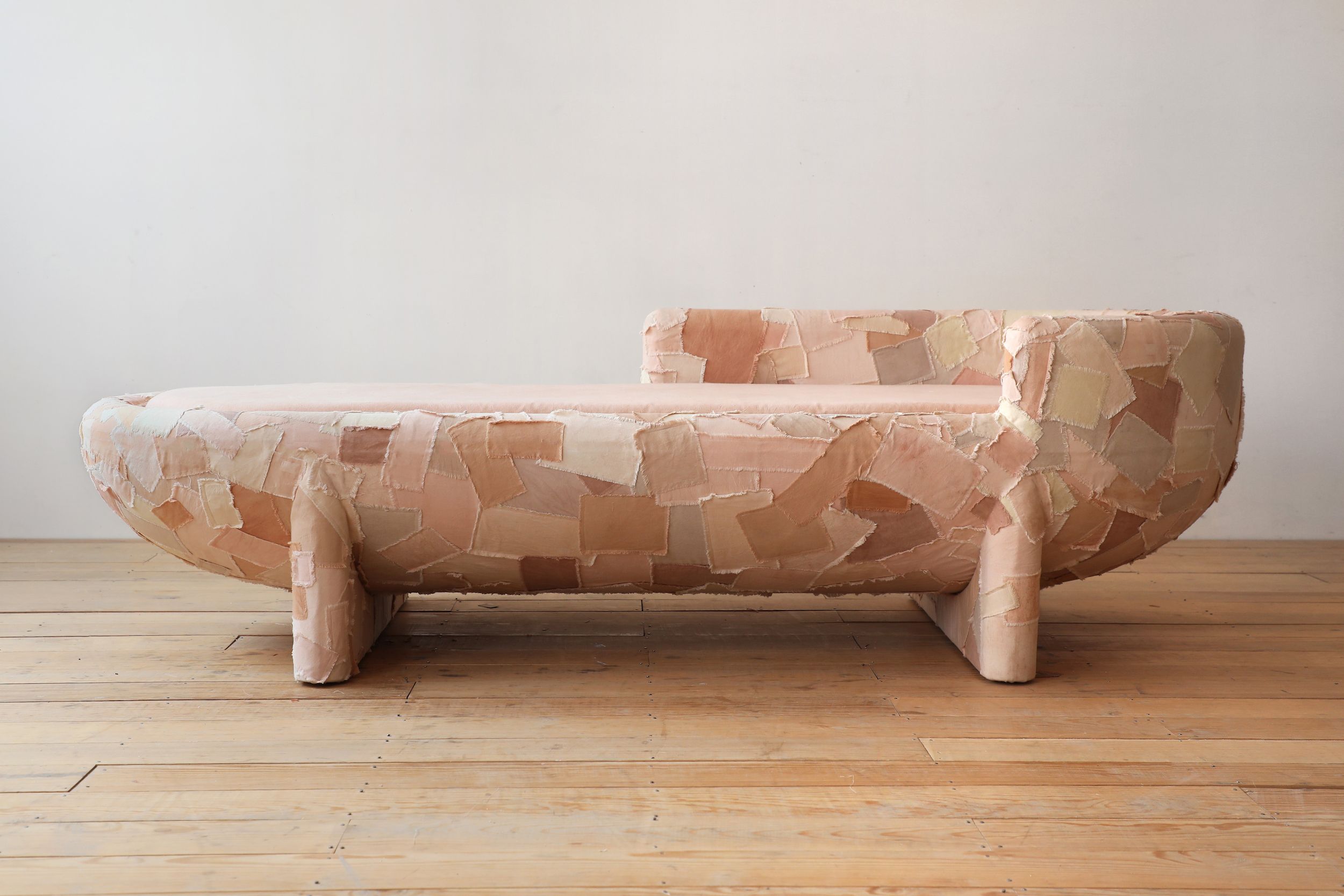
RESTING PLACE (2023) BY FERNANDO LAPOSSE. UPHOLSTERED PLYWOOD, AVOCADO DYED COTTON AND PLATED UPHOLSTERY TACKS.
Courtesy of Friedman Benda and Fernando Laposse
AC/Were someone to look at any of your new pieces a few hundred years from now, what stories do you most hope these objects will tell about this particular time, place, and people?
FL/I hope that by that time it reminds them of a moment right before drastic measures were taken to restructure our economic global system, because I see that as the only way that a human will even be able to be physically looking at this.
The stories that the pieces tell are those of patience in a time of rush, collectiveness in a time of individualism, and that of restraint in a time of excess. They are the stories of an indigenous village trying to keep the fibers of their social fabric from unraveling under the pressures of a global system that is incompatible with their traditional ways.

FURRY MIRROR BY FERNANDO LAPOSSE (2023) IN AGAVE FIBERS AND PLYWOOD
Image courtesy of Friedman Benda and Fernando Laposse
AC/How do you describe your approach to honoring and learning from indigenous knowledge systems in your practice?
FL/My method is to ask a lot of questions before suggesting any actions. These kinds of questions include ‘Why did you stop doing this, this thing that worked so well?’ And, ironically, the answer is often because of money. And even though they don’t care too much for money, [like everyone] they do need it for basic things like healthcare, education, and dignified living.
Unfortunately the indigenous ways of farming have become incredibly expensive. This is of course in comparison to how cheap industrial food production has gotten. The downside to hyper-efficient industrial farming is the damage to the land. Once the land is damaged to the point of uselessness, people migrate. This is exactly what happened to Tonahuixtla; it became a ghost town.
My approach is therefore to see how design can generate revenue, [embracing] their traditional methods without sacrificing their authenticity. It's a delicate balancing act of innovation and tradition.
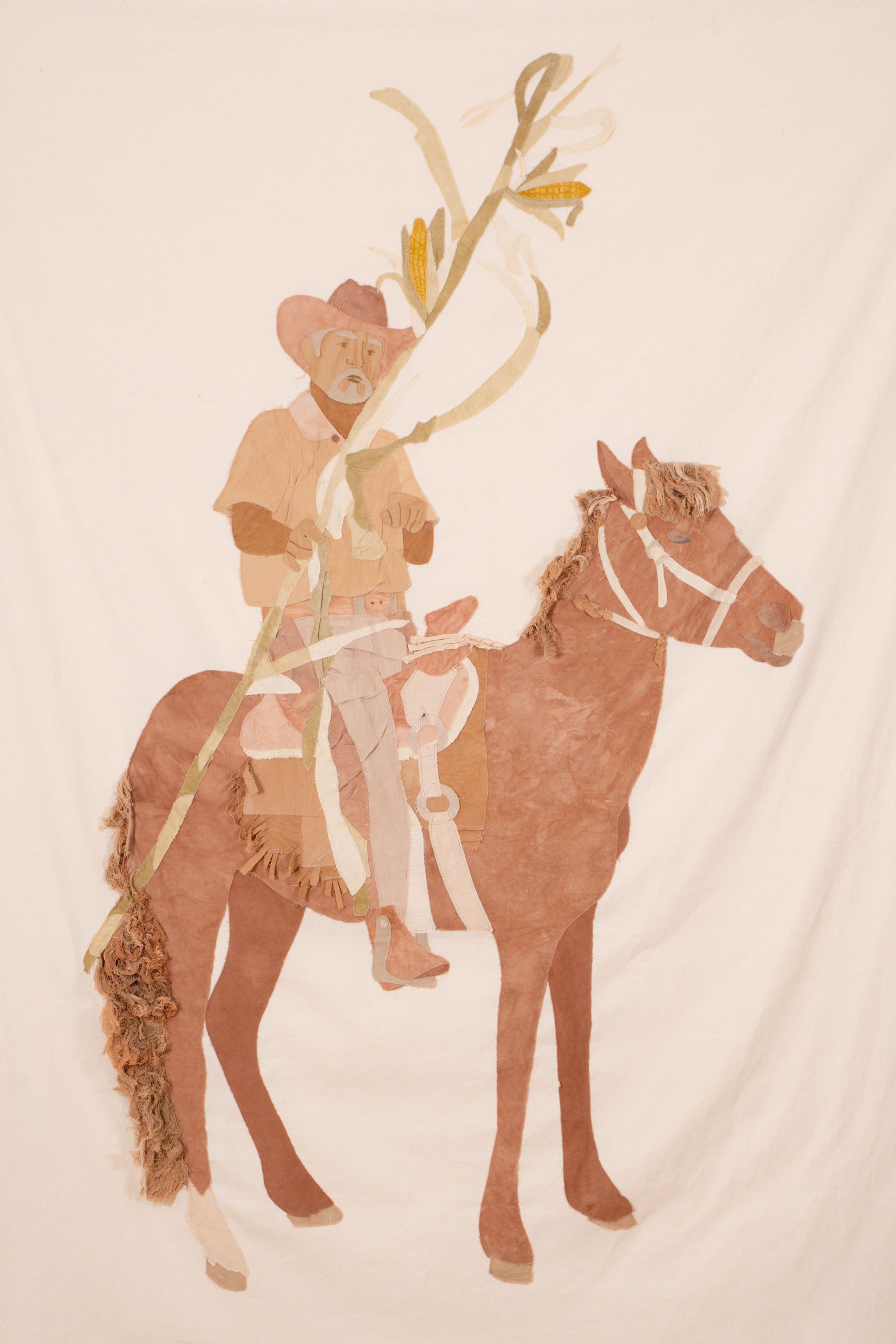

FROM LEFT: SAUL AND DOÑA LUCY (BOTH 2023). COTTON DYED WITH AVOCADO AND MARIGOLD FLOWER.
Courtesy of Friedman Benda and Fernando Laposse
AC/Tell us a bit about some of the pieces in the show—the tapestries, for example. What can you tell us about the people you’ve chosen to honor as subjects?
FL/They are all real people who have been instrumental in my projects with corn and agave. They are all part of the project, but have different roles. The tapestries are textile representations of real photographs I took of them.
Don Emiliano is a local builder who helped us rebuild the building where we now produce Totomoxtle in the village. He is standing next to an archeological relic we found in one of the cornfields. This carved stone has imagery of snakes and corn and dates back to 400 AD, a time of cultural prosperity for the Mixtecs, the ancestors of the villagers of Tonahuixtla were Mixteco is still spoken to this day.
Doña Lucy is the plant expert. She is the one that handpicks all the seeds we will plant every season. In indigenous communities this is a task performed by women; in a way it's them that will be making all the genetic improvements and adaptations season after season. Lucy was also the first woman to ever be the leader of the council of elders in Tonahuixtla, and her support for the project has been invaluable.
Saul is only a few years older than me. We used to play as kids together. He migrated to the USA to work illegally in the fields of California when he was only 17. After 12 years of moving all over the United States following the crop seasons, he decided it was time to come back and be with his family. He is one of the managers of the town workshop, but also a farmer. In my opinion he represents one of the best success stories of the project, which is to create a situation where returning migrants can see a future in Tonahuixtla.
AC/ Those are beautiful tributes. What has your experience over the past near decade working in Mexico taught you about design’s potential for transformative social and environmental impact?
FL/ I think it can have a massive potential for positive impact, if it's done right of course.
My journey in the past decade has been one of unlearning how to design like a European and learning how to design for a place like Mexico, where speculative design is not an option. The challenges here are completely different, and the urge for action to protect our cultural and natural heritage is huge. I also believe that designers here can’t turn a blind eye on the rampant social inequalities, as I see it as the main cause for the detriment of our ecosystems. We can’t expect people to not go and cut down a forest if that is the only way to get money to obtain basic human rights for their families.
What really excites me about designing in Mexico is that we are considered a ‘developing country.’ This to me is fascinating, as I believe we can still course correct and change direction to avoid the traps that the ‘first world countries’ created to land us in the environmental mess that we find ourselves in.
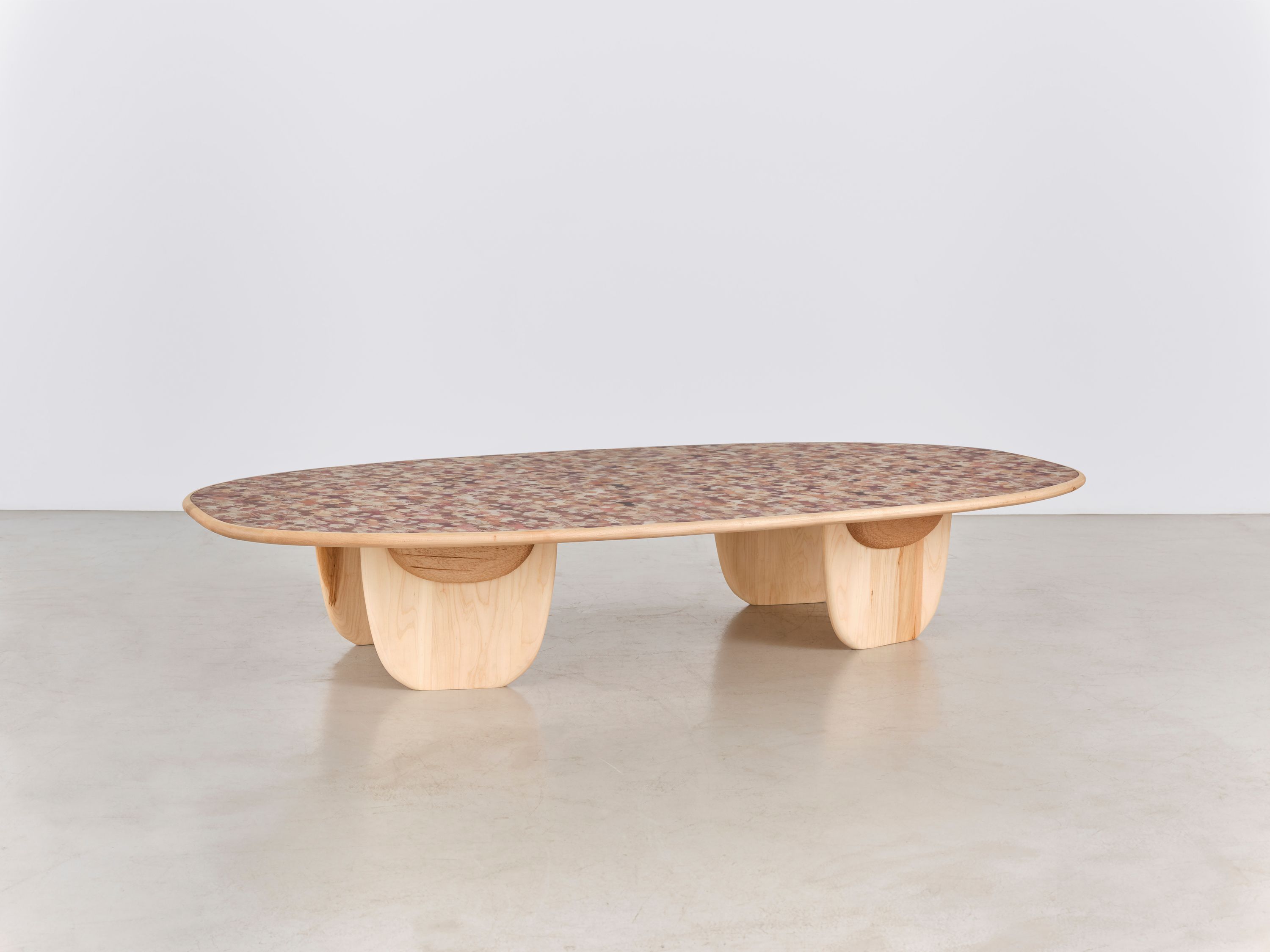
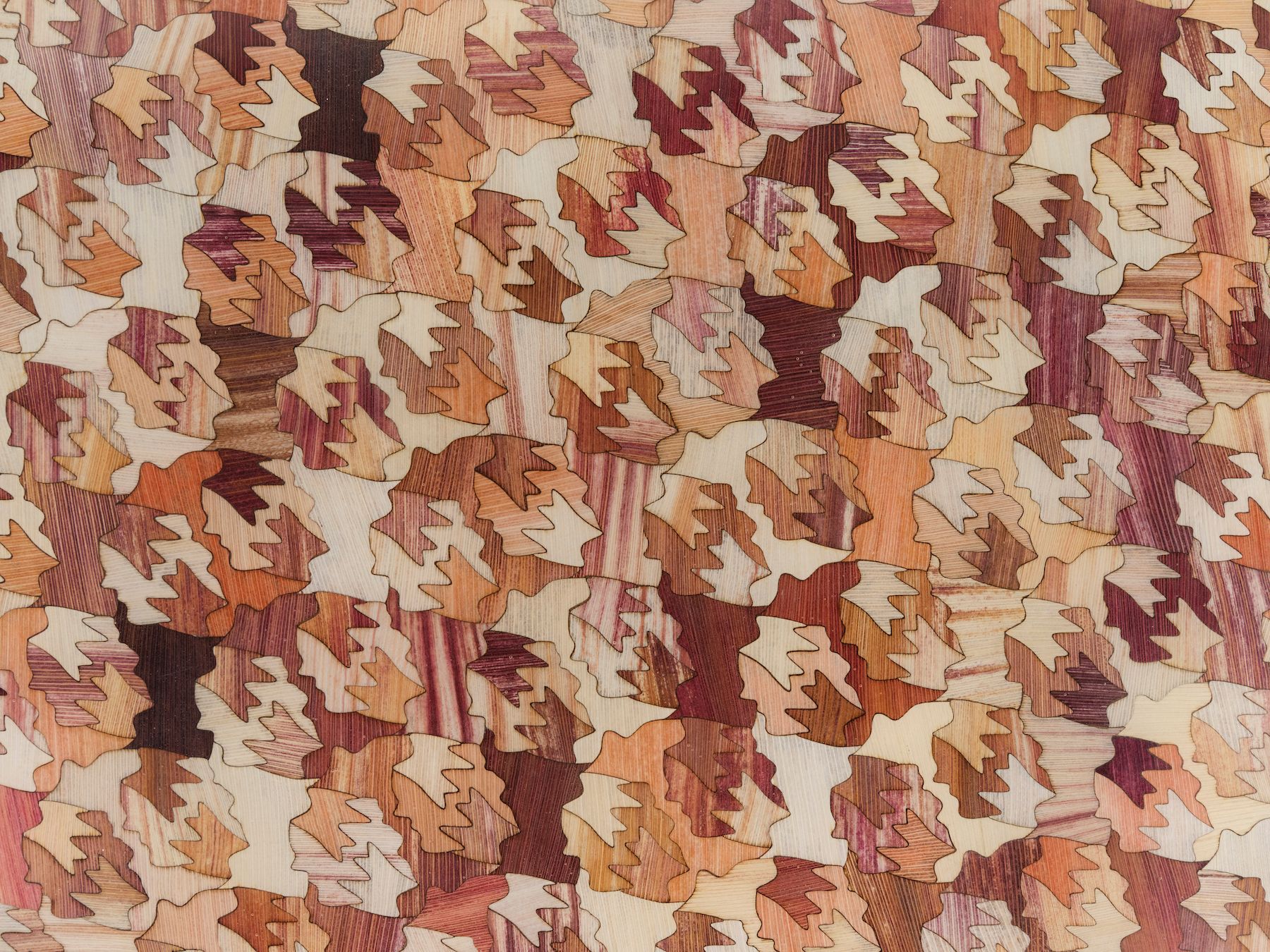
TOTOMOXTLE SNAKE COFFEE TABLE (2021) BY FERNANDO LAPOSSE. HEIRLOOM CORN HUSK MARQUETRY ON MAPLE, ECO-RESIN
Photography by Timothy Doyon; Courtesy of Friedman Benda and Fernando Laposse
AC/How has this collaboration impacted the community in Tonahuixtla since it began in 2015?
FL/The impact is visible in both environmental and social results.
[From an environmental perspective:] We have reintroduced 8 varieties of heirloom maize that hadn’t been planted in over 25 years through a collaboration with the world’s largest corn seed bank. The corn husks are then transformed into the veneer material in a workshop we have created in the village. In terms of erosion, we have covered 180 hectares of useless land with hundreds of thousands of agaves, which are retaining water and soil, and the mountains are slowly regaining their original flora and fauna. The wells closest to this agave reforestation project now show a 30 percent increase in water compared to those on the opposite side of the village. This is because all that water retained by the agaves is filtering to the water table. And we now have a big population of bats in the area, the main pollinators of the agaves. They have been hugely influential in lowering the local pests, as they eat the insects that plague the corn at night. Both projects interact and help each other.
In social terms, we are creating employment for 30 families both in the fields and in our community workshop, where the vast majority of the workers are returning migrants that left the USA during the pandemic, as they had no financial help there because of their illegal status. This is a big part of the project, creating a scenario where people can see a future in their town as dignified farmers and craftspeople.
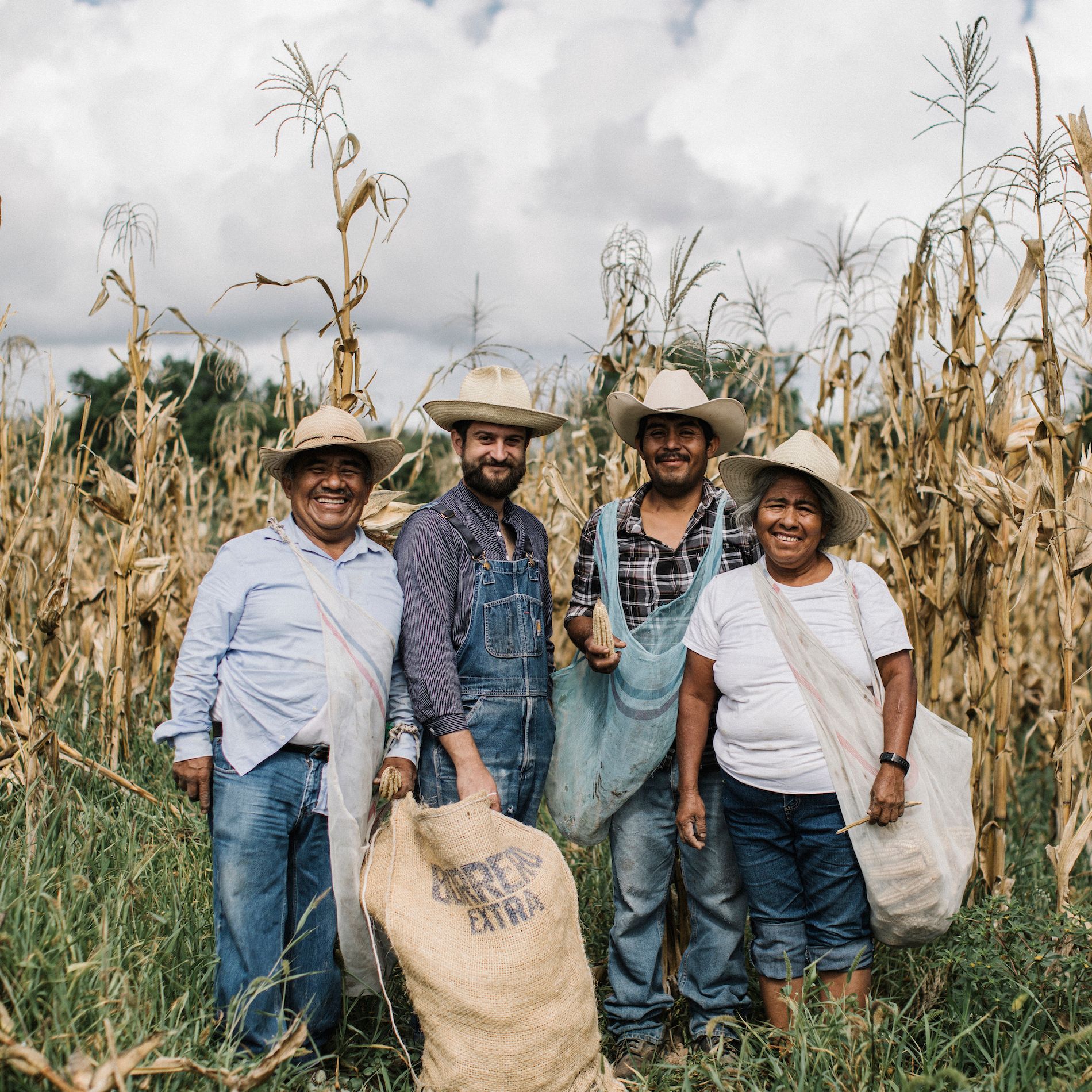
LAPOSSE PARTNERS WITH THE COMMUNITY OF TONAHUIXTLA, A SMALL VILLAGE OF MIXTEC FARMERS AND HERDERS IN THE STATE OF PUEBLA.
Photo © Fernando Laposse
AC/How has your work in Mexico impacted you? Has it changed or reinforced your understanding of your role as a designer?
FL/It has made me think of legacy: What is my work leaving behind? Yes of course it is, in part, about making beautiful objects, but the best part of this will be the environmental and social gains that this collaboration will impart.
AC/Where do you hope to see the collaboration in 5 years? 20 years?
FL/Well it's funny, because when you talk about a design project, 9 years makes it seem old. But if you describe it as a project about regenerative agriculture or reforestation, the project is still in its infancy. This is a lifelong project for me. The work is endless, and hopefully it will go on for much longer than I am alive.
Want to see more of Laposse? Check out his Instagram here. And following Ghosts of Our Town, in December, four years' worth of research will be on display at the NGV Triennial in Melbourne, where the artist will be highlighting the dark side of avocado farming.
